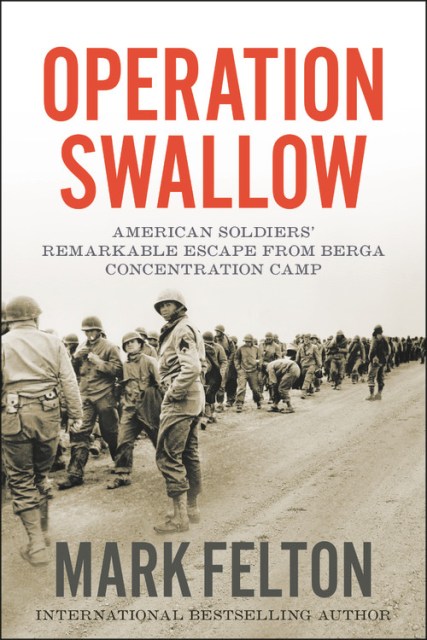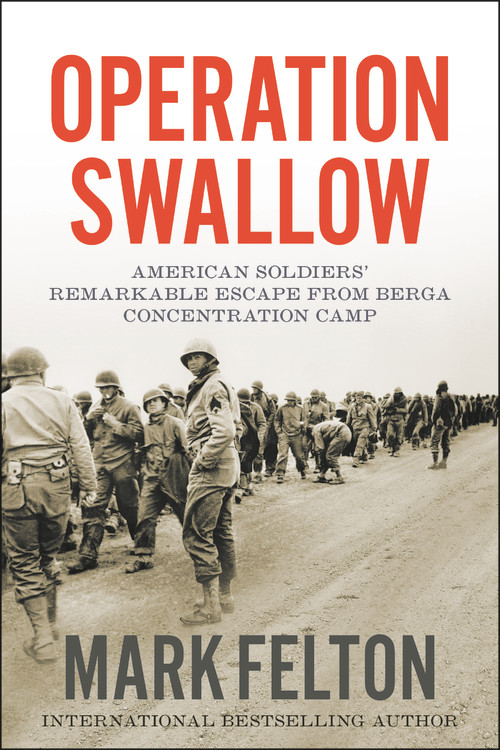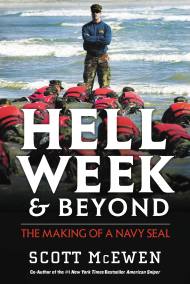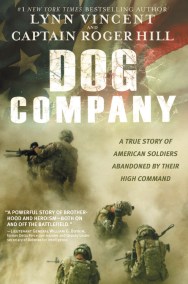Promotion
Use code MOM24 for 20% off site wide + free shipping over $45
Operation Swallow
American Soldiers' Remarkable Escape from Berga Concentration Camp
Contributors
By Mark Felton
Formats and Prices
Price
$28.00Price
$35.00 CADFormat
Format:
- Hardcover $28.00 $35.00 CAD
- ebook $14.99 $19.99 CAD
- Audiobook Download (Unabridged)
This item is a preorder. Your payment method will be charged immediately, and the product is expected to ship on or around October 15, 2019. This date is subject to change due to shipping delays beyond our control.
Also available from:
The true and heroic story of American POWs’ daring escape from a Nazi concentration camp.
In this little-known story from World War II, a group of American POW camp leaders risk everything to save hundreds of fellow servicemen from a diabolical Nazi concentration camp. Their story begins in the dark forests of the Ardennes during Christmas 1944 and ends at the Buchenwald Concentration Camp in the spring of 1945. This appalling chapter of US military history and uplifting Holocaust story deserves to be widely known and understood.
Operation Swallow provides a historical, first person perspective of how American GIs stood up against their evil SS captors who were forcing them to work as slave laborers. A young GI is thrust into a leadership position and leads his fellow servicemen on a daring escape. It is a story filled with courage, sacrifice, torture, despair, and salvation. A compelling narrative-driven nonfiction book has not been written that takes the reader deep into the dark story of Operation ‘Swallow’ and Berga Concentration Camp–until now.
Written from personal testimonies and official documents, Operation Swallow is a tale replete with high adventure, compelling characters, human drama, tragedy, and eventual salvation, from the pen of a master of the modern military narrative.
Genre:
- On Sale
- Oct 15, 2019
- Page Count
- 304 pages
- Publisher
- Center Street
- ISBN-13
- 9781546076445
Newsletter Signup
By clicking ‘Sign Up,’ I acknowledge that I have read and agree to Hachette Book Group’s Privacy Policy and Terms of Use







